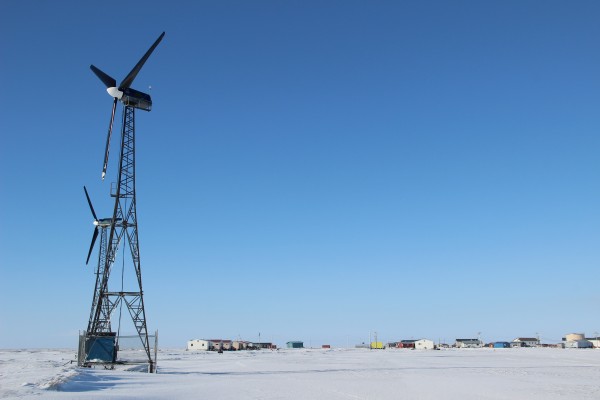
In rural Alaska, one problem thwarts a thousand good ideas: the high cost of energy. From generating electricity to heating homes to fueling boats and snowmachines, energy expenses eat into budgets, are a barrier to business and add to the prohibitive cost of water and sewer systems.
But communities around the state are trying to change that. At the mouth of the Kuskokwim River, the four villages in the Chaninik Wind Group – Kwigillingok, Kongiganak, Tuntutuliak and Kipnuk — are pioneering a system that combines wind turbines, diesel generators, and storage systems with smart grid controls.
The goal? Replace 50 percent of diesel use in the next few years.
It’s senior carnival night in Kwigillingok, about a forty minute flight southwest of Bethel. The school is raising money to send its four seniors on a graduation trip, to Hawaii. There’s a cake walk in the brand new gym. The student store is serving up popcorn and slushees.
And right now, all of this – the lights, the music, the popcorn, the slushee-maker — it’s all being powered entirely by the wind.

Kwig sits on the tundra just about a quarter mile from the Bering Sea. Outside, there is a serious blizzard blowing in.
Walk around the corner from the school, and you can see the village’s five wind turbines, four of which are turning. If you take a walk down to the power house, you hear — almost nothing. The diesel generators are off. The turbines are carrying the load for the entire village.
That’s thanks in large part to William Igkurak.
Igkurak has worked for the local utility, the Kwigillingok Power Company, since 1983. And for decades, he’s had a problem.
“Diesel,” he said. “You cannot control the price of fuel. We were always at the mercy of the fuel supplier.”
Plus, diesel generators break down. Repairs are expensive. And when Igkurak applied for grants from the state, he said, Kwig was always overlooked. With fewer than 400 people, it was too small.
So about ten years ago, Igkurak set out to change that.
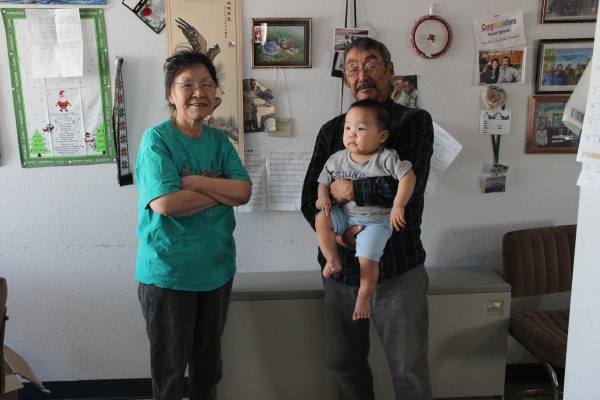
He convinced the four villages along the coast to band together and pool their resources. Together, they created the Chaninik Wind Group — focusing on one thing the region has plenty of.
“Because wind is free,” Igkurak said. “Wind is free, all you need to do is harness it and find ways to store it.”
Igkurak approached Dennis Meiners, who runs Intelligent Energy Systems.
“He came to me, and said, let’s put up a wind turbine,” Meiners said. “I said no, let’s not put up a wind turbine.”
Meiners had something more ambitious in mind.
“You need a wind system,” he said. “A wind system that could really displace a significant amount of diesel fuel.”
There are about 200 Alaska communities which, like Kwig, run their own isolated power grids, or microgrids. Statewide, about 30 use wind in some way. But there are major challenges to adding wind – or any renewable – to a small grid. Wind is unpredictable. Sometimes it blows, sometimes it doesn’t.
And Meiners and Igkurak wanted to go further, to integrate more wind than any of the existing systems — which meant finding new ways to do things.
“It just doesn’t exist,” Meiners said, of the technology the Chaninik Wind Group needed. “Big companies don’t invest in technology for villages, so a lot of solutions had to be hand-crafted.”
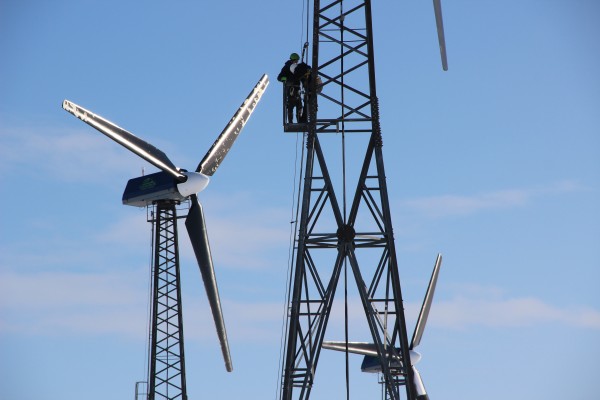
They decided the only way to displace a large enough amount of diesel would be to design a system that would turn the diesel generator entirely off whenever there was enough wind to power the full village.
To do that — without wrecking your generator or causing an outage — you need two things: storage, and controls.
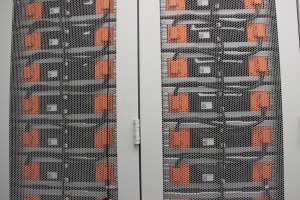
For storage, the system uses batteries – Chevy Volt batteries, in fact. There are also small electric thermal stoves in homes throughout the village, which absorb excess wind energy – and cut the need for heating fuel.
And all the different parts of the system have to talk to each other, turning on and off as the conditions change.
Meiners: We’re controlling loads across the grid, across a community, about every half second. We’re changing the loads across the community. So that’s how we’re managing it. That’s our smart grid.
Waldholz: Is that unusual?
Meiners: Is that unusual? I don’t know anybody else doing it.
As in, anywhere. It’s one of the very few systems, not just in Alaska, but in the world, using all these pieces in this way.
Last year, Kwig, the first village to get the full system in place, was powered by only wind more than 30 percent of the time, Meiners said.
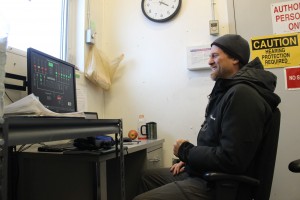
So far, the project has been funded with about $13 million in state and federal grants to the four Chaninik communities. They’ve received money from the state legislature; from the Alaska Energy Authority’s Renewable Energy Fund and Emerging Energy Technology Fund; from the Denali Commission; and from the U.S. Department of Energy’s Tribal Energy Program.
But the goal is to make the system economically competitive with diesel – and easy to replicate.
“I’m not going to tell you that we are here today with that,” Meiners said. “But we are very, very close. Very close.”
And he predicts this model isn’t only for remote communities.
“These systems are going to be very, very common,” he said. “Will your subdivision at your house have that? Well, maybe. Will your community have a community wind system and they sell energy across the grid?…The technologies are still the same. Are you going to have your own microgrid at your house? Well, probably.”
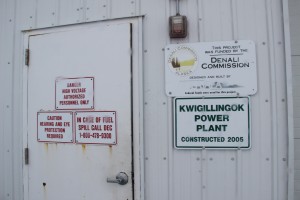
Back at the Kwig School, the carnival has ended, and Patrick Boonstra, who works for Meiners at IES, is watching the system work in real time on his laptop.
Outside, the wind is slowing.
Boonstra: It’s dropped to 15 [miles per hour]…to 11…
It’s a real world test of the system. Will the different parts adjust?
And they do. One by one, the turbines turn themselves off – and the diesel generator comes on.
Boonstra: I just saw one kick on..three kicked off…and the diesel is taking all of the load. And we’re sitting [here] and the lights didn’t flicker!
And he’s right. The lights stay on in Kwigillingok.
Rachel Waldholz covers energy and the environment for Alaska's Energy Desk, a collaboration between Alaska Public Media, KTOO in Juneau and KUCB in Unalaska. Before coming to Anchorage, she spent two years reporting for Raven Radio in Sitka. Rachel studied documentary production at the UC Berkeley Graduate School of Journalism, and her short film, A Confused War won several awards. Her work has appeared on Morning Edition, All Things Considered, and Marketplace, among other outlets.
rwaldholz (at) alaskapublic (dot) org | 907.550.8432 | About Rachel




